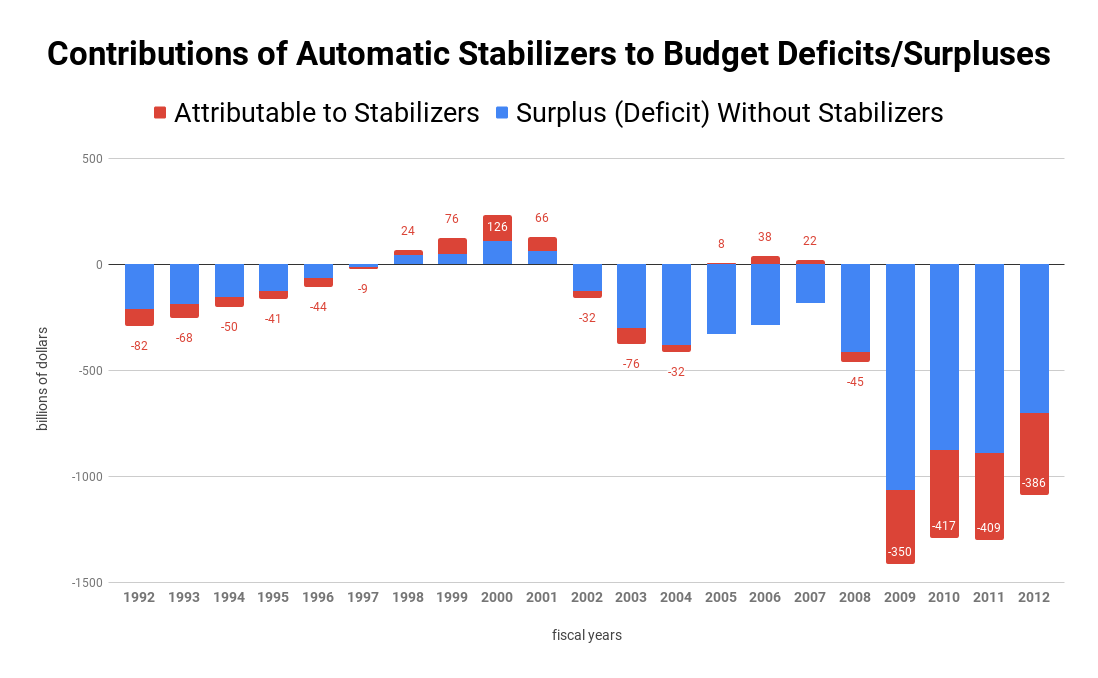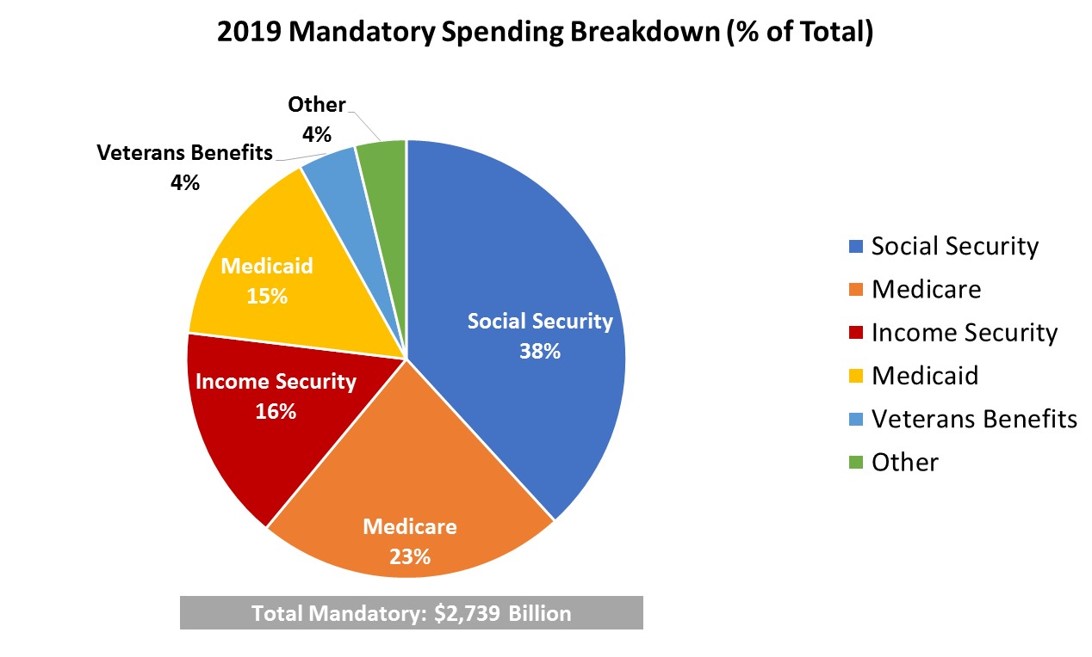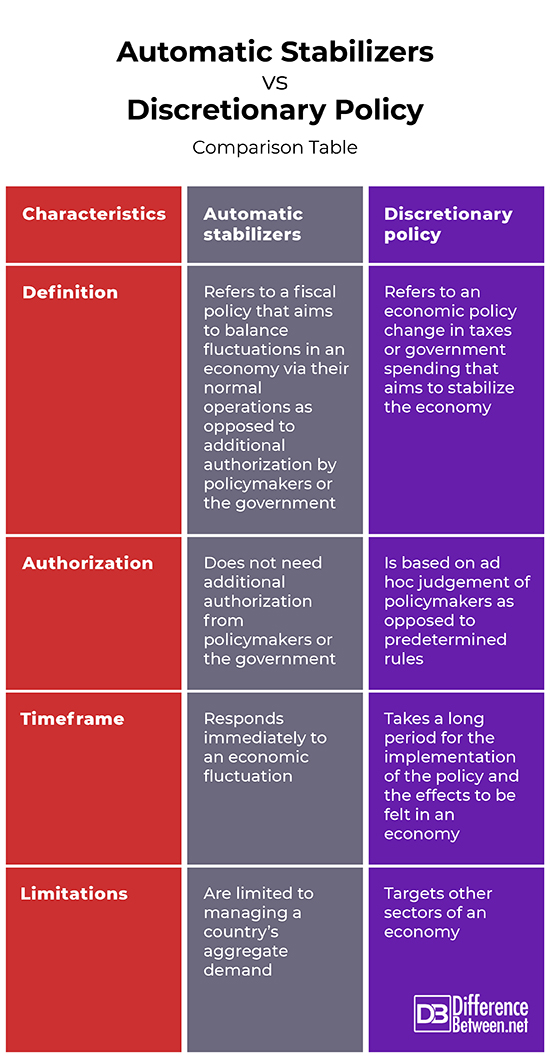Difference Between Automatic Stabilizers and Discretionary Policy
In times of economic crisis, governments may be forced to undertake drastic actions. For instance, the government may change the country’s fiscal policy in sectors such as taxation. The policies often affect the consumers spending power hence influencing economic outcomes. Some of the policies that governments may undertake include automatic stabilizers and discretionary policy. Understanding these policies will lead you to smarter investment decisions but will also help understand the state of the economy. In this article, we will look at the difference between automatic stabilizers and discretionary policy.

What are the Automatic Stabilizers?
This is a fiscal policy that aims to balance fluctuations in an economy via their normal operations as opposed to additional authorization by policymakers or the government.
Automatic stabilizers are referred to this since they do not need external triggers to stabilize an economy. The most popular automatic stabilizers include personal income taxes, transfer systems such as welfare and unemployment insurance and progressively graduated corporate taxes. Other automatic stabilizers can include the use of a progressive taxation structure where incomes taken in taxes increases with an increase in incomes. When incomes decrease due to factors such as failing investments, job losses or a recession, the amount then decreases.
The automatic stabilizers are favoured by Keynesian economics to prevent economic recessions and slumps.
While they counter recessions and other negative economic shocks, they can also be used to prevent inflation or cool off an expanding economy. These policies take more money in form of taxes from an economy when incomes are high and put back the money in form of tax refunds or government spending in times of low incomes and slow economic activities.

What is Discretionary Policy?
This is an economic policy change in taxes or government spending that aims to stabilize the economy. It is based on ad hoc judgement of policymakers as opposed to predetermined rules.
The discretionary policy uses two tools, namely:
- The tax code- This includes taxes on corporate profits, excise fees, imports and worker’s incomes.
- Budget process- This is the determination of how the budget will be laid out.
Types of discretionary policy include;
- Expansionary fiscal policy- This is an instance where the government decreases taxes and increases spending. It leads to the creation of jobs hence boosting spending which in turn leads to economic growth. When taxes are decreased, people are left with more money to spend. This boosts product demand hence driving economic growth. For faster economic growth, the government can opt to cut taxes and spending
However, an expansionary fiscal policy can cause a budget deficit since the government spends more than it receives.
- Contractionary fiscal policy- This is an instance where the government raises taxes or cuts spending. It is a policy that slows economic growth since less money is channelled towards employees and contractors.
The discretionary fiscal policy has been criticized since:
- It takes a long period for the implementation of the policy and the effects being felt in an economy
- It is difficult for governments to implement a contractionary policy. This leads to a rise in expenditure and a fall in taxes.
- It is difficult to implement since major economic sectors cannot survive with spending cuts
- Since higher incomes cause an increase in expenditure and a fall in the trade balance, it can cause a higher trade deficit
- It can lead to fewer private investments as a result of excessive government borrowing
Similarities between Automatic stabilizers and Discretionary policy
- Both are policies that aim at stabilizing economies during fluctuations
Differences between Automatic stabilizers and Discretionary policy
Definition
Automatic stabilizers refer to a fiscal policy that aims to balance fluctuations in an economy via their normal operations as opposed to additional authorization by policymakers or the government. On the other hand, the discretionary policy refers to an economic policy change in taxes or government spending that aims to stabilize the economy.
Authorization
While automatic stabilizers do not need additional authorization from policymakers or the government, the discretionary policy is based on ad hoc judgement of policymakers as opposed to predetermined rules.
Timeframe
Automatic stabilizers respond immediately to an economic fluctuation. On the other hand, the discretionary policy takes a long period for the implementation of the policy and the effects to be felt in an economy.
Limitations
While automatic stabilizers are limited to managing a country’s aggregate demand, discretionary policy targets other sectors of an economy.
Automatic stabilizers vs. Discretionary policy: Comparison Table

Summary of Automatic stabilizers vs. Discretionary policy
Automatic stabilizers refer to a fiscal policy that aims to balance fluctuations in an economy via their normal operations as opposed to additional authorization by policymakers or the government. On the other hand, discretionary policy refers to an economic policy change in taxes or government spending that aims to stabilize the economy. It is based on ad hoc judgement of policymakers as opposed to predetermined rules. While they may have different implementation timeframes, both aim at stabilizing economies during fluctuations.
- Difference Between Profit Center and Investment Center - July 2, 2022
- Difference Between Anti-Trust and Anti-Competition - June 6, 2022
- Difference Between Stocktaking and Stock Control - June 6, 2022
Search DifferenceBetween.net :
Leave a Response
References :
[0]Portier F & Hairault J. Business Cycles and Macroeconomic Stability: Should We Rebuild Built-in Stabilizers?. Springer Science & Business Media, 2012.https://books.google.co.ke/books?id=CmXSBwAAQBAJ&pg=PA264&dq=Difference+between+automatic+stabilizers+and+discretionary+policy&hl=en&sa=X&ved=2ahUKEwia2L_t67HuAhVnUhUIHf9xBpwQ6AEwAXoECAgQAg#v=onepage&q=Difference%20between%20automatic%20stabilizers%20and%20discretionary%20policy&f=false
[1]Sapir A & Buti M. EMU and Economic Policy in Europe. Edward Elgar Publishing, 2002. https://books.google.co.ke/books?id=7hQZ5mEI1s8C&pg=PA15&dq=Difference+between+automatic+stabilizers+and+discretionary+policy&hl=en&sa=X&ved=2ahUKEwia2L_t67HuAhVnUhUIHf9xBpwQ6AEwAnoECAkQAg#v=onepage&q=Difference%20between%20automatic%20stabilizers%20and%20discretionary%20policy&f=false
[2]Rochon L & Gnos C. Credit, Money and Macroeconomic Policy: A Post-Keynesian Approach. Edward Elgar Publishing, 2011. https://books.google.co.ke/books?id=Uo_OyKsfjxoC&pg=PA65&dq=Difference+between+automatic+stabilizers+and+discretionary+policy&hl=en&sa=X&ved=2ahUKEwia2L_t67HuAhVnUhUIHf9xBpwQ6AEwAHoECAQQAg#v=onepage&q=Difference%20between%20automatic%20stabilizers%20and%20discretionary%20policy&f=false
[3]Image credit: https://commons.wikimedia.org/wiki/File:Discretionary_Spending_2019.jpg
[4]Image credit: https://commons.wikimedia.org/wiki/File:Contributions_of_Automatic_Stabilizers_to_Budget_Deficits_Surpluses.png
